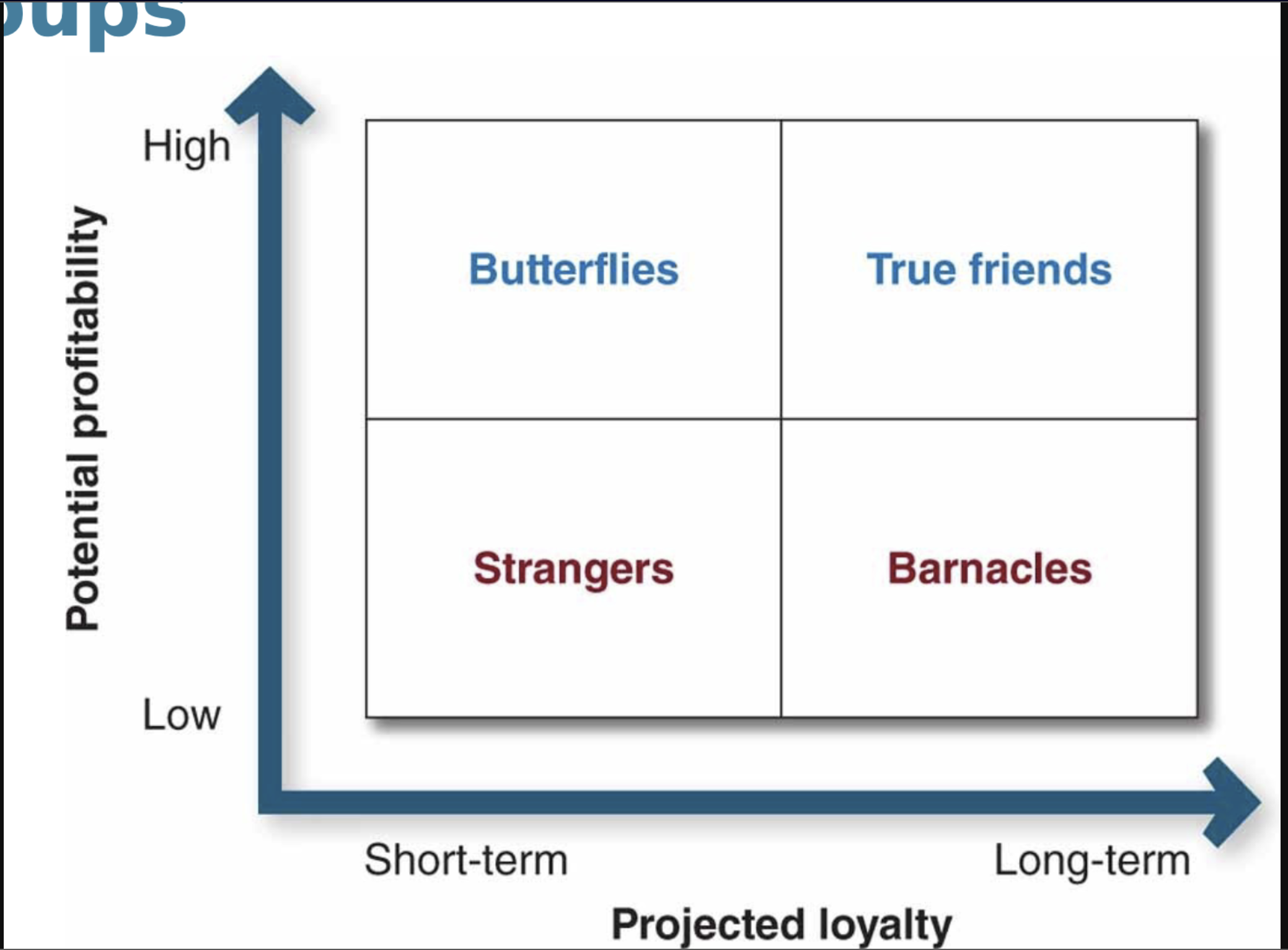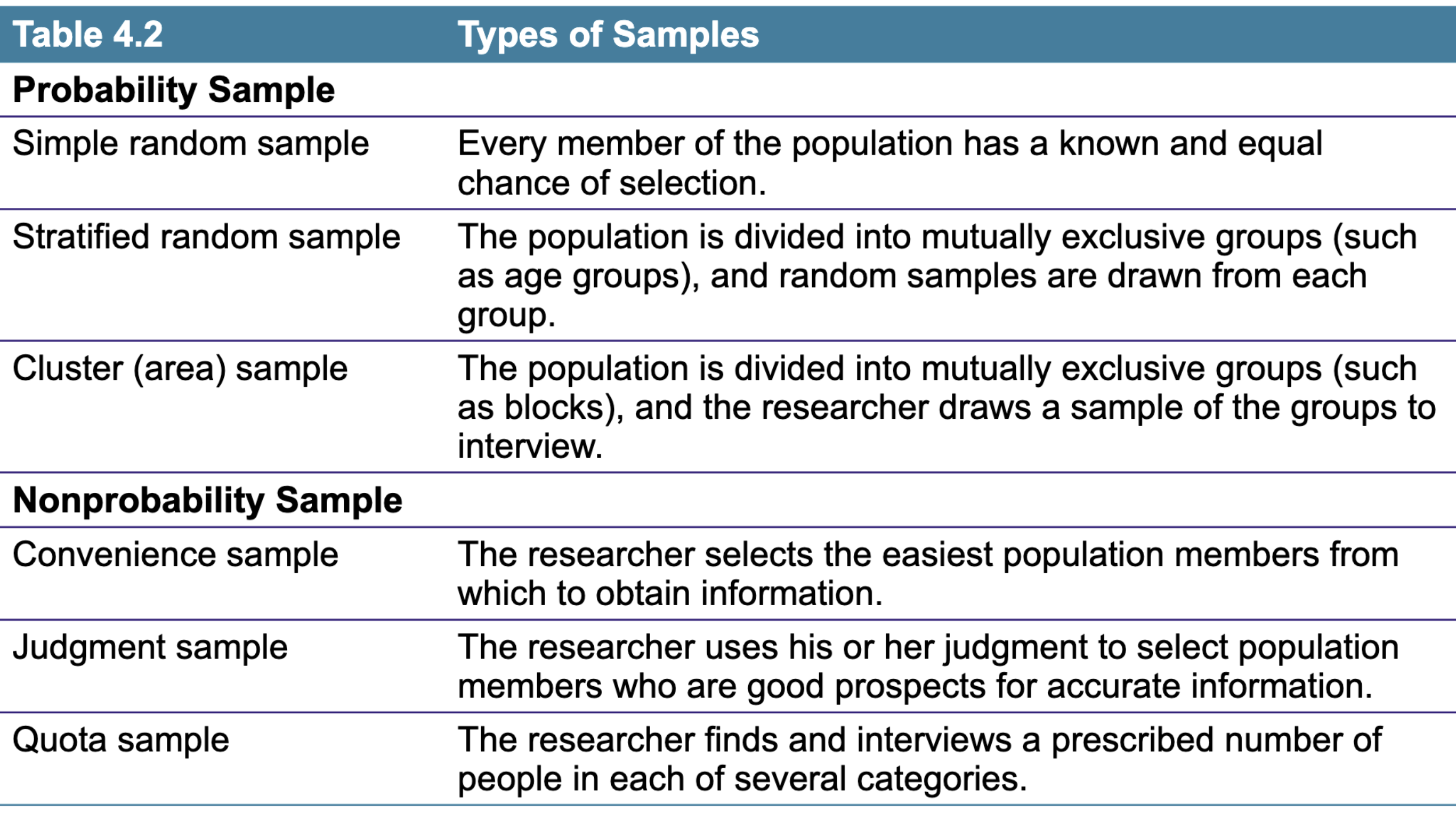-
Five core customer and marketplace concepts

– Needs, wants, and demands– Market offerings– Customer Value and satisfaction– Exchanges and relationships– Markets
-
Marketing myopia
Paying more attention to the specific products than to the benefits and experience produced by these products
-
The BCG Growth-Share Matrix

Boston Consultant Group
Evaluates a company’s SBUs in terms of market growth rate and relative market share:
Cash cow - High market share low market growth: Doing well in no growth market with limited opportunities
Dog - Low market share and low market growth: Weak in market, difficult to add profit
Star - High market share and high market growth: Doing well with great opportunities
Question mark - Low market share and high market growth: Don't know what to do with opportunities; decide whether to increase investment
-
The Product/Market Expansion Grid

-
Value delivery network
Composed of the company, its suppliers, its distributors, and its customers
-
Customer Relationship Groups

-
Marketing Management Orientations
• Production concept - focus on product• Product concept• Selling concept - not enough to build a product, have to sell it (convince people)• Marketing concept - customer is the focus• Societal marketing concept - make sure we are contributing to society and not harming
-
Customer Relationship Management
– Customer-perceived value: Customer’s evaluation ofthe difference between all the benefits and all the costsof a market offering relative to those of competingoffers– Customer satisfaction: Extent to which a product’sperceived performance matches a buyer’s expectations– Customer delight: Companies aim to delightcustomers by promising only what they can deliver andthen delivering more than they promise
-
SWOT Analysis

-
Return on Investment (ROI)
Net return from a marketing investment divided by the costs of the marketing investment
-
Microenvironment
Actors close to the company that affect its ability to serve its customers
-
Macroenvironment
Larger societal forces that affect the microenvironment
-
Actors in the Microenvironment
The Company - Interrelated groups in a company form the internal environment
Suppliers - Provide the resources needed by the company to produce its goods and services
Marketing Intermediaries - help the company to promote, sell, and distribute its products to final buyers.
Resellers
Physical distribution firms
Competitors - Marketers must gain strategic advantage by positioning products strongly against competitors
Publics - any group that has an actual or potential interest in or impact on an organization’s ability to achieve its objectives
Financial
Media
Government
Customers
• Five types of customer markets
Reseller markets
Government markets
International markets
-
Major Forces in the Company’s Macroenvironment
Demographic Environment - Demography is the study of human populations in terms of size, age, gender, race, occupation, and other statistics.
Economic Environment - Economic factors affect consumer purchasing power and spending
Changes in consumer spending
Differences in income distribution
Natural Environment - Physical environment and natural resources needed as inputs by marketers or affected by marketing activities - economic sustainability
Technological Environment - New technologies create new markets and opportunities
Political Environment - Forces that influence or limit various organizations and individuals in a society
Cultural Environment - Institutions and other forces that affect a society’s basic values, perceptions, and behaviors
-
Recession
A period of economic activity characterized by negative growth
-
Big data
The huge and complex data sets generated by today’s sophisticated information generation, collection, storage, and analysis technologies.
Brands can use such big data to gain deep customer insights, personalize marketing offers, and improve customer engagements and service
-
Marketing Information System
Consists of people and procedures to
– Assess information needs
– Develop the needed information
– Help decision makers use the information to generate
and validate actionable customer and market insights
• Information needed can be obtained from
– Internal databases
– Competitive marketing intelligence
– Marketing research
-
Exploratory research
• Used to gather preliminary information
• Helps to define problems and suggest hypotheses
-
Descriptive research
• Used to better describe the market potential for a product
or the demographics and attitudes of consumers
-
Causal research
• Used to test hypotheses about cause-and-effect
Relationships
-
Observational research
Research Approach
• Gathering primary data by observing relevant people, actions,
and situations
• Ethnographic research: Sending trained observers to watch
and interact with consumers in their natural environments
-
Survey research
Research Approach
• Asking people questions about their knowledge, attitudes,
preferences, and buying behaviour
-
Experimental research
Research Approach
• Selecting matched groups of subjects, giving them different
treatments, controlling related factors, and checking for
differences in group responses
-
Behavioral targeting
• Uses online consumer tracking data to target
advertisements and marketing offers to specific consumers
-
Social targeting
• Mines individual online social connections and
conversations from social networking sites
-
Sampling Plan
• A sample is a segment of the population selected to
represent the population as a whole.
• Decisions required for sampling design:
– Sampling unit - People to be studied
– Sample size - Number of people to be studied
– Sampling procedure - Method of choosing the people to
be studied
-
Factors Influencing Consumer Behaviour

Cultural Factors:
CultureSubcultureSocial class
Social Factors:
Word-of-mouth influenceOpinion leaders and influencer marketingOnline social networks
Personal Factors:OccupationAgeLifestyle
Psychological Factors:
MotivationLearningBeliefs and Attitudes
-
Derived demand
Business demand that comes from the demand for consumer goods
-
Supplier development
Systematic development of networks of supplier-partners to ensure a dependable supply of products and materials
-
Types of Buying Situations
Straight rebuy
• Buyer routinely reorders something without any modifications
Modified rebuy
• Buyer wants to modify product specifications, prices, terms, or
suppliers
New task
• Buyer purchases a product or service for the first time
Systems selling (or solutions selling)
• Buying a packaged solution to a problem from a single seller
• Avoids the separate decisions involved in a complex buying
situation
-
Major Influences on Business Buying Behaviour

-
Designing a Customer Value- Driven Market Strategy

-
Major Segmentation Variables for Consumer Markets

Geographic segmentation: Dividing a market into
different geographical units
– counties, cities, or neighbourhoods
• Demographic segmentation: Dividing a market into
segments based on variables
– Such as age, gender, income,
Psychographic Segmentation: Marketers segment their markets using variables such as
– Social class
– Lifestyle
– Personality characteristics
Behavioural Segmentation: • Occasion segmentation: Segments divided according to occasions, when the buyers
– Get the idea to buy
– Make their purchase
– Use the purchased item
-
Intermarket (cross-market) segmentation
Grouping consumers with similar needs and buying
behaviours irrespective of their location
-
Winning Value Propositions

-
Product position
The way a product is defined by consumers on important attributes
-
Discretionary Income from gross income
GROSS INCOME - DISPOSABLE INCOME (NET) - ESSENTIAL SPENDING - DISCRETIONARY INCOME
$100,000 $70,000 $50,000 $20,000
-
Generational groups
- Baby Boomers - 1947 - 1965
Active, affluent
- Generation X - 1966 - 1978
Time poor—service dependent
- Millennials (or Generation Y) - 1979 - 2000
Entrepreneurial
- Generation Z - 2000 - 2009
Brand consciousness
-
Cause-Related Marketing
Exercise their social responsibility
Build more positive images
-
Steps in Strategic Planning

-
The Changing Marketing Landscape
• Digital Age
Digital and social media marketing, mobile marketing• Growth of Not-for-Profit Marketing
Sound marketing can help not-for-profits attract membership, funds, and support.• Rapid Globalization
Mcdonalds • Sustainable Marketing
Corporate ethics and social responsibility
-
Secondary Data
Secondary Data:
• Information that already exists• Collected for another purpose• Sources:– Company’s internal database– Purchased from outside suppliers– Commercial online databases– Internet search engines
• Advantages– Low cost– Obtained quickly– Cannot collect otherwise• Disadvantages– Potentially Irrelevant– Inaccurate– Dated– Biased
-
Primary Data Categories and Methods
Research approaches:
Observation
Survey
Experiment
Contact methods:
Mail
Phone
Personal
Online
Sampling plan:
Sampling unit
Sampling size
Sampling procedure
Research instruments:
Questionare
Mechanical instruments
-
Sampling plan

• A sample is a segment of the population selected torepresent the population as a whole.• Decisions required for sampling design:– Sampling unit - People to be studied– Sample size - Number of people to be studied– Sampling procedure - Method of choosing the people tobe studied
-
Research Instruments
Questionnaires can be administered in person, byphone, by e-mail, or online.– Closed-ended questions– Open-ended questions• Mechanical instruments include– People meters– Checkout scanners– Neuromarketing
-
Maslow's Hierarchy of Needs

-
Buyer decision process
Need recognition - information search - evaluation of alternatives - purchase decision - postpurchase behaviour
-
Stages in the Adoption Process
• Awareness• Interest• Evaluation• Trial• Adoption
-
Characteristics Influencing anInnovation’s Rate of Adoption
• Relative advantage• Compatibility• Complexity• Divisibility• Communicability
-
Derived demand
Business demand that comes fromthe demand for consumer goods

